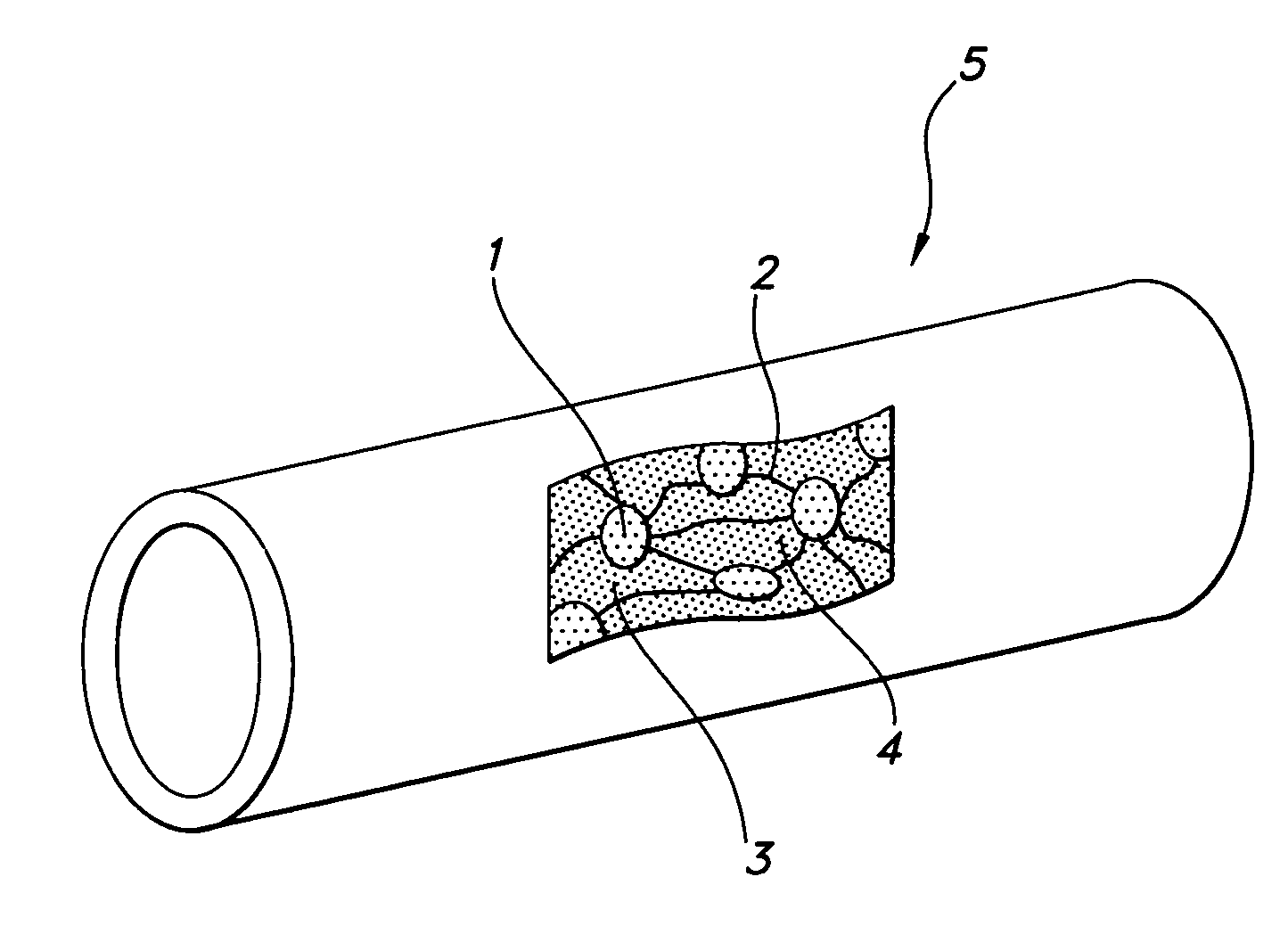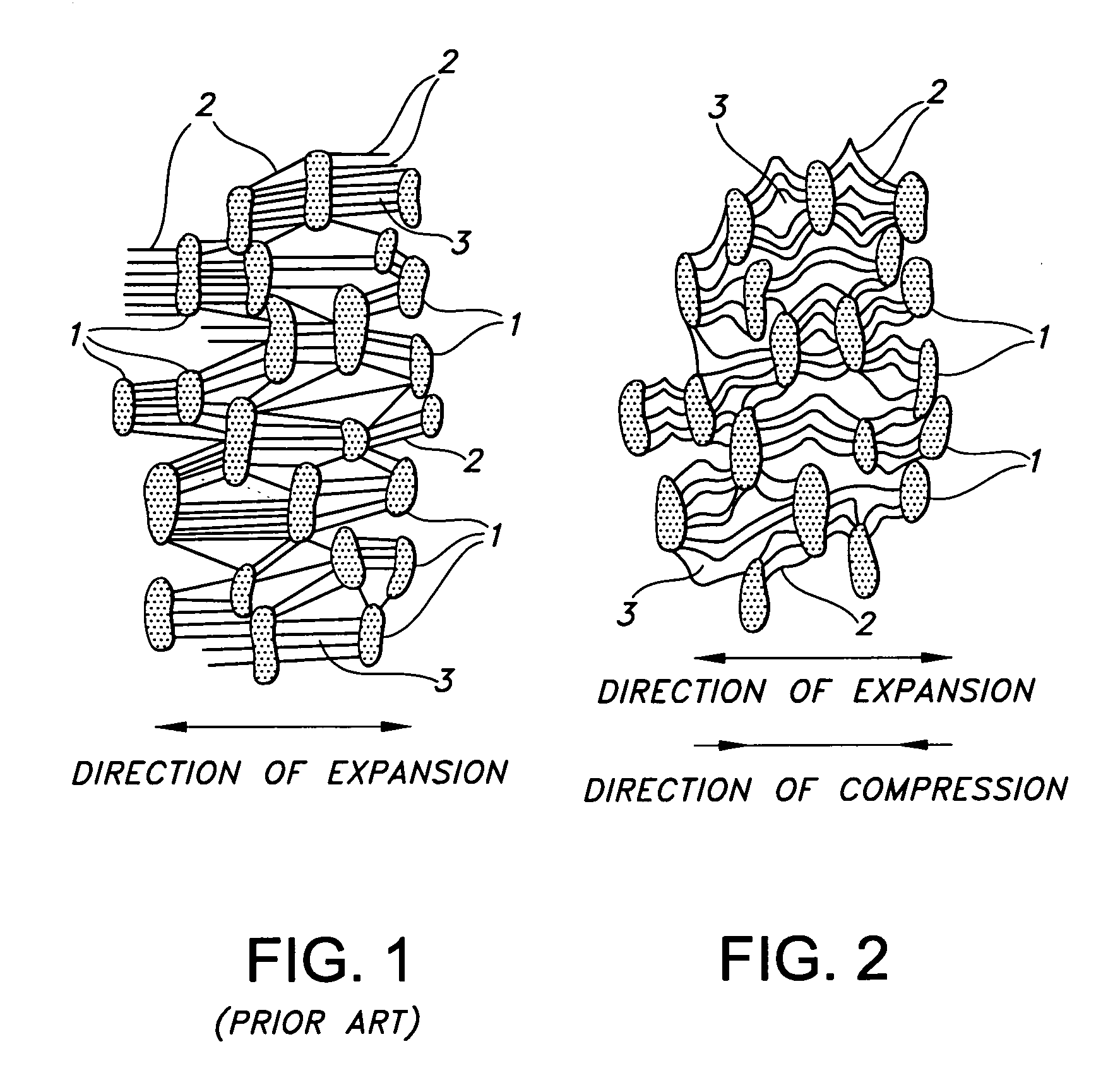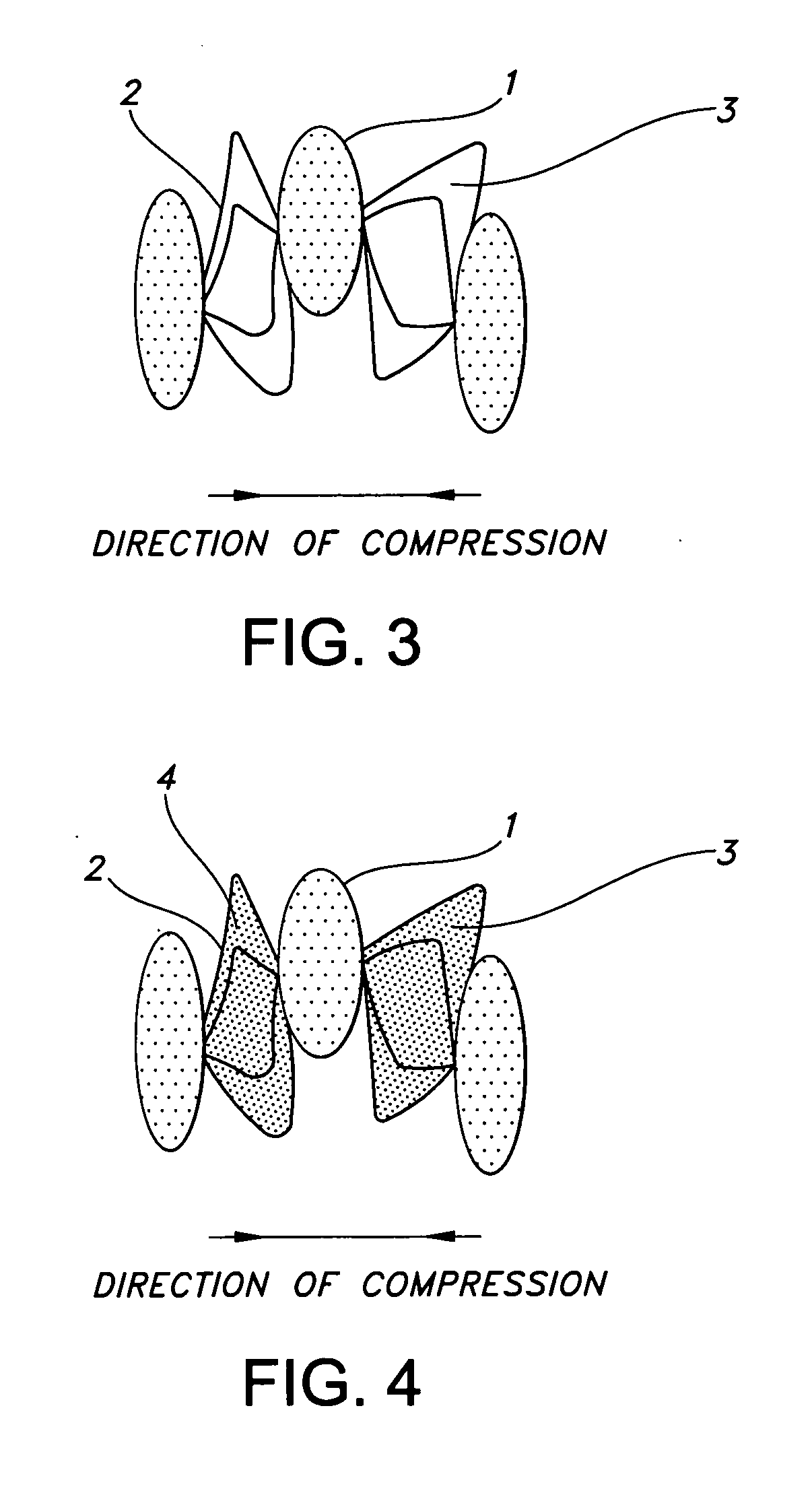Elastomerically impregnated ePTFE to enhance stretch and recovery properties for vascular grafts and coverings
a technology of eptfe and elastomer, which is applied in the field of elastomerically recoverable ptfe, can solve the problems of undesirable ingrowth, eptfe material has a tendency to leak blood at suture holes, and complex processes
- Summary
- Abstract
- Description
- Claims
- Application Information
AI Technical Summary
Benefits of technology
Problems solved by technology
Method used
Image
Examples
example 1
[0086] Placed 6 mm diameter ePTFE excel soft tube with 1500% expansion over a mandrel of equal diameter. Manually longitudinally compressed the tube about 50% and secured the ends of the tube with Teflon tape. While in the compressed state, applied 7.5% Corethane 2.5W30 in DMAc by brushing technique. Placed tube into oven at 110° F. to dry for 10 min. Remove from oven. Repeated the application of elastomeric material by the brushing technique 2 more times. Then, removed tube and dried after each application from mandrel. The elastomerically recoverable PTFE tube was longitudinally stretch up to 90% its original length. Once the stretching force was removed the tube recovered to its original length without deformation. The stretching and recovery was repeated multiple times without deforming the elastomerically recoverable PTFE tube.
example 2
[0087] Placed 6 mm diameter ePTFE tube of 800% expansion, expansion velocity of 35 cm / sec, over a mandrel with similar diameter. Evenly applied the 7.5% Corethane 2.5W30 in DMAc by the spraying technique. Placed tube into oven at 110° C. for 10 min. and slightly dried the Corethane. Then, removed tube from oven, and repeated elastomeric application by the spray technique and again dried the 2nd application. Then, removed from oven and longitudinally compressed ePTFE penetrated with elastomeric material about 50% while on the mandrel, and secured with Teflon tape. A third application of Corethane was applied by the spray technique while the tube was in the compressed state. The tube was placed in oven for 10 min. The tube was removed from the oven, and then removed from the mandrel. The tube longitudinally stretched about 300%. Upon release of stretching force the elastomerically recoverable PTFE tube recovered to original size. The stretching and recovery was repeated multiple times...
PUM
| Property | Measurement | Unit |
|---|---|---|
| diameter | aaaaa | aaaaa |
| molecular diameters | aaaaa | aaaaa |
| molecular diameters | aaaaa | aaaaa |
Abstract
Description
Claims
Application Information
 Login to View More
Login to View More - R&D
- Intellectual Property
- Life Sciences
- Materials
- Tech Scout
- Unparalleled Data Quality
- Higher Quality Content
- 60% Fewer Hallucinations
Browse by: Latest US Patents, China's latest patents, Technical Efficacy Thesaurus, Application Domain, Technology Topic, Popular Technical Reports.
© 2025 PatSnap. All rights reserved.Legal|Privacy policy|Modern Slavery Act Transparency Statement|Sitemap|About US| Contact US: help@patsnap.com



